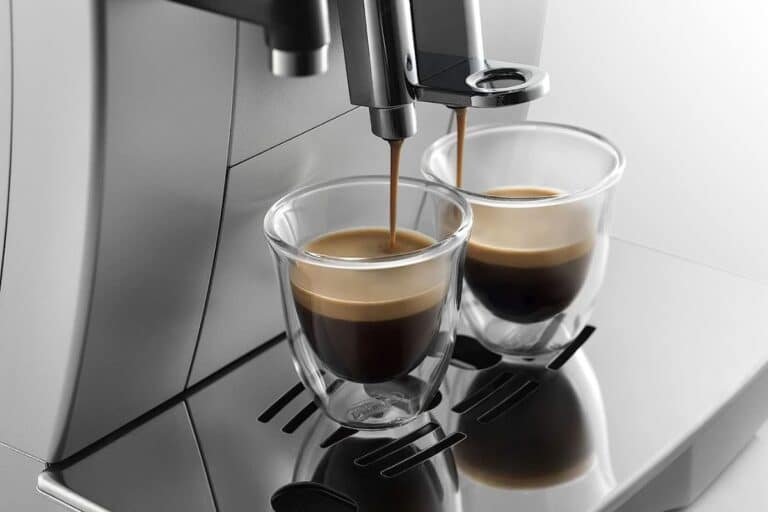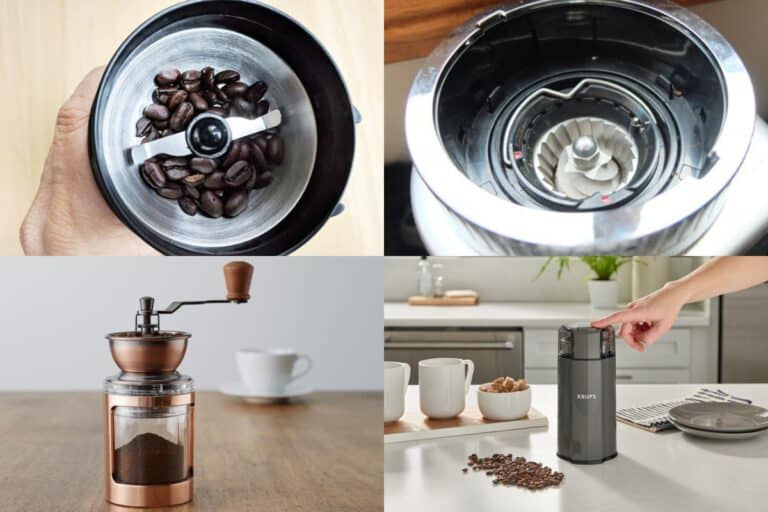When it comes to making a great cup of coffee, many enthusiasts know that the grinder is just as important as the beans. The right grinder can help you achieve a balanced, flavorful brew, while the wrong one can leave you with uneven grounds and an underwhelming cup. The debate between conical and flat burr grinders often comes up when coffee lovers are looking for a new grinder. Both options can produce excellent results, but they each have their own unique characteristics that might make one a better choice for you.
In this post, we’ll break down the differences between conical and flat burr grinders, their pros and cons, and what to consider when choosing between the two.
What Is a Burr Grinder?
Before diving into the specifics of conical and flat burr grinders, it’s essential to understand what a burr grinder is. Unlike blade grinders, which chop coffee beans unevenly, burr grinders use two abrasive surfaces (called burrs) to grind the beans to a uniform size. This even grinding process ensures that your coffee extracts at a consistent rate, resulting in a more balanced flavor.
The two main types of burr grinders are conical and flat. The names refer to the shape of the burrs used in each grinder.
Conical Burr Grinders
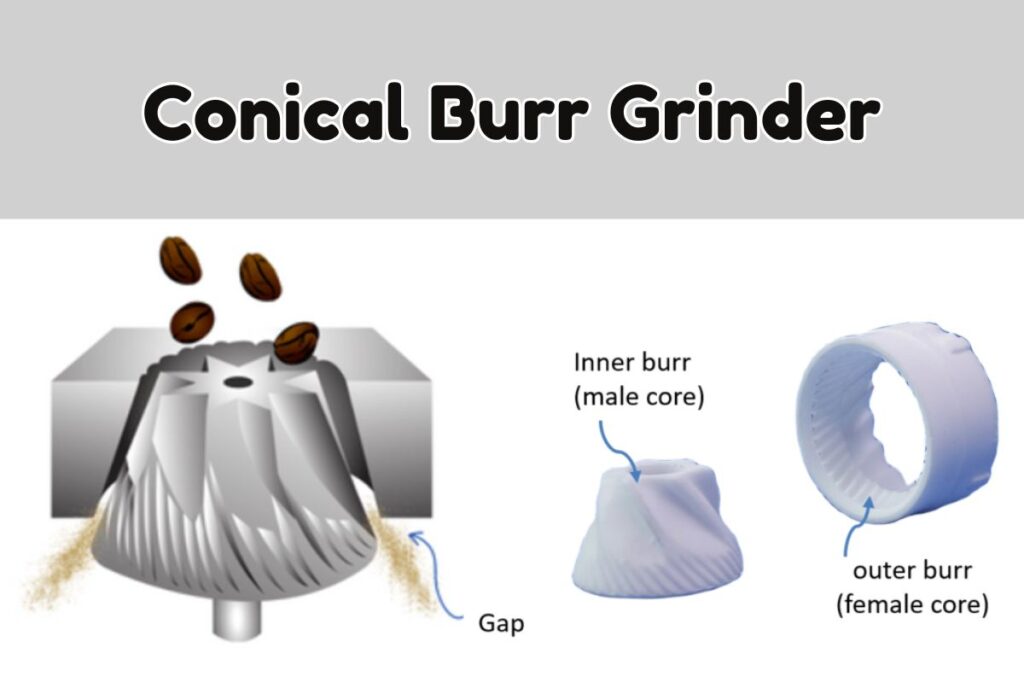
Conical burr grinders feature cone-shaped burrs with a central axle that spins inside a larger cone. The beans fall between these two surfaces and are crushed into a uniform size as they pass through.
Key Features:
- Burr Shape: Cone-shaped with a vertical design.
- Grind Consistency: Produces a bimodal grind, meaning it generates a mixture of fine and coarse particles. This grind is preferred by many espresso enthusiasts because it can enhance the extraction process, especially with pressure brewing methods like espresso.
- Heat Management: Conical burr grinders tend to run cooler because they use gravity to pull the beans through the burrs, which reduces the need for a fast-spinning motor.
- Noise Level: Typically quieter due to their design, which requires less motor speed to achieve the same grind.
Pros of Conical Burr Grinders:
- Lower Heat Generation: Because they operate at slower speeds, conical burrs produce less heat, which can help preserve the flavor of the beans.
- Energy Efficiency: The design allows for less energy consumption compared to flat burr grinders.
- Versatile Grind Sizes: Conical burr grinders are generally easier to adjust, making them a popular choice for espresso, drip coffee, and pour-over enthusiasts.
- Less Noisy: The slower speed of the motor makes these grinders quieter during operation.
Cons of Conical Burr Grinders:
- Inconsistent Particle Size: Conical burr grinders produce a bimodal grind, meaning some particles are finer while others are slightly larger. While this works well for espresso, it might not be ideal for all brewing methods.
- More Expensive Models Can Be Pricey: High-end conical burr grinders, especially those designed for espresso, can be quite expensive.
Flat Burr Grinders
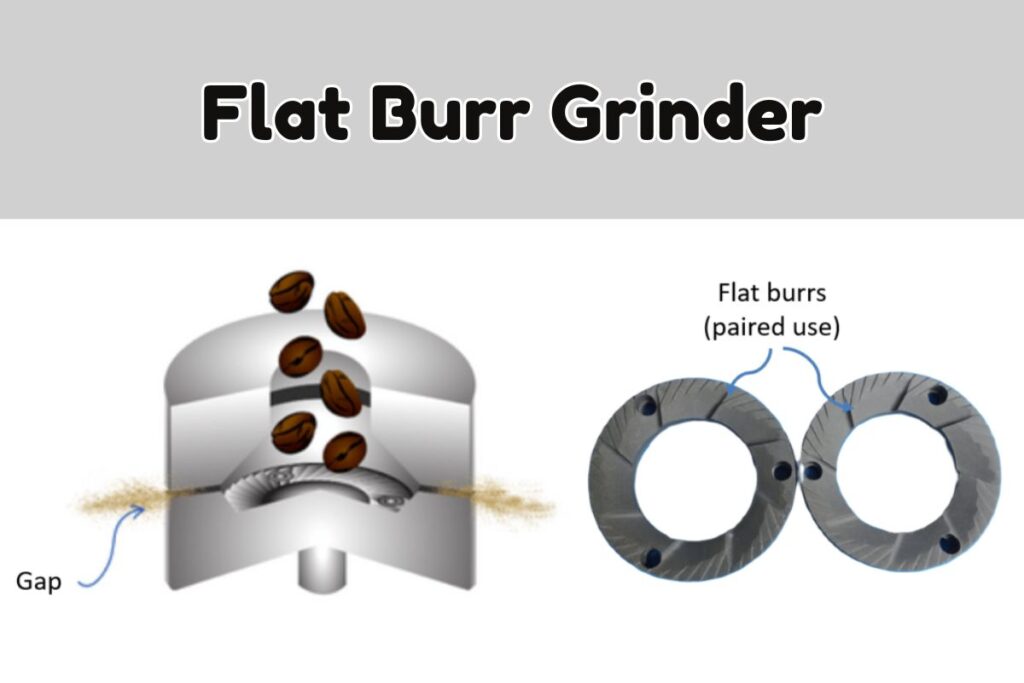
Flat burr grinders, on the other hand, use two horizontally aligned discs with sharp edges. The beans are ground as they are caught between the two burrs and forced through the grinding surfaces.
Key Features:
- Burr Shape: Two flat, parallel burrs that are mounted horizontally.
- Grind Consistency: Flat burr grinders create a unimodal grind, meaning the particles are more uniform in size. This results in a more consistent extraction, which can lead to a clearer and more balanced flavor, especially with pour-over and drip brewing methods.
- Heat Management: Because the beans are forced through the burrs rather than falling through, flat burr grinders often generate more heat.
- Noise Level: These grinders tend to be noisier because they require a higher motor speed to push the beans through the flat burrs.
Pros of Flat Burr Grinders:
- Even Grind Size: The unimodal grind produced by flat burrs is highly consistent, which can improve flavor clarity in brewing methods like pour-over and drip coffee.
- Better for Bulk Grinding: Flat burr grinders are often preferred in commercial settings where large quantities of beans need to be ground quickly and uniformly.
- Enhanced Flavor Clarity: Flat burr grinders produce a more uniform grind size, resulting in a cleaner cup of coffee with distinct flavors.
Cons of Flat Burr Grinders:
- More Heat Production: The high-speed motor can generate more heat, which may affect the flavor of the beans during grinding.
- Noisier: The faster speed required to grind with flat burrs tends to create more noise.
- Requires Frequent Cleaning: Flat burr grinders can retain more grounds inside the burrs, leading to a buildup that requires more frequent cleaning.
Conical vs Flat Burr Grinder: Head-to-Head Comparison
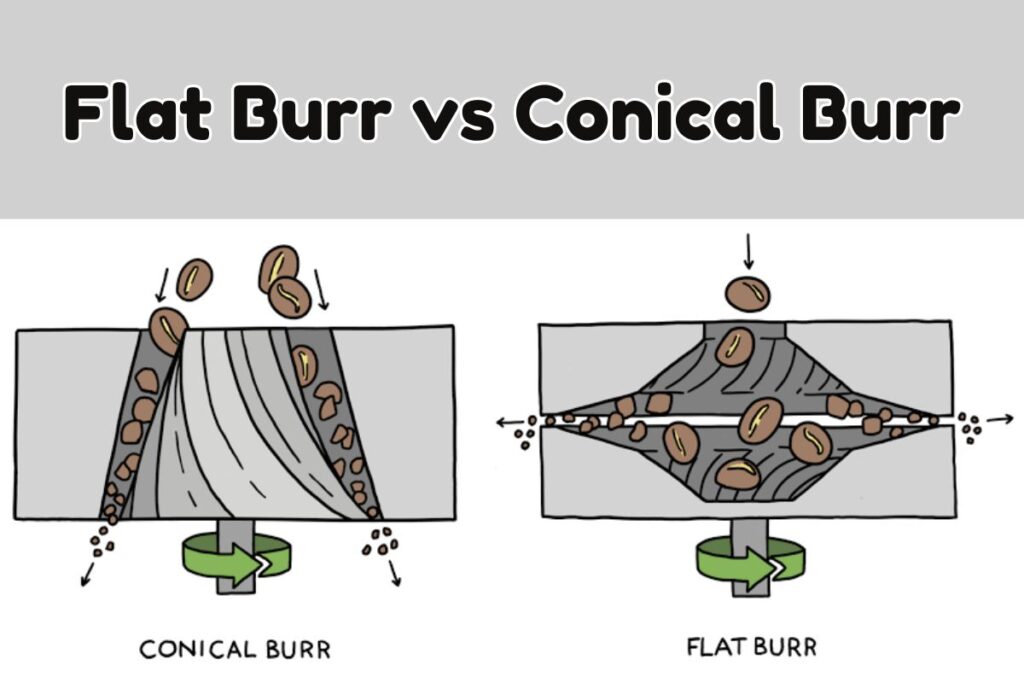
To make the choice easier, here’s a direct comparison of the two grinder types based on key factors.
1. Grind Consistency
- Conical Burr Grinders: Produce a bimodal grind with a mix of fine and coarse particles.
- Flat Burr Grinders: Offer a more consistent, unimodal grind, which is often better for pour-over or drip brewing.
2. Heat Generation
- Conical Burr Grinders: Generate less heat due to their slower motor speed, which helps preserve the beans’ flavor.
- Flat Burr Grinders: Generate more heat because they operate at higher speeds, which can impact the beans’ flavor over time.
3. Noise Level
- Conical Burr Grinders: Quieter due to slower operation.
- Flat Burr Grinders: Louder because of the high-speed motor needed to grind beans efficiently.
4. Ease of Maintenance
- Conical Burr Grinders: Easier to maintain since they don’t trap as many grounds.
- Flat Burr Grinders: Require more frequent cleaning as grounds can get stuck between the burrs.
5. Cost
- Conical Burr Grinders: Generally more affordable, especially for home models.
- Flat Burr Grinders: Can be more expensive, particularly for commercial-grade models.
Which One Should You Choose?
The best burr grinder for you depends on your brewing method and preferences.
- For Espresso Lovers: If you primarily brew espresso, a conical burr grinder might be your best bet. The bimodal grind it produces can enhance the flavor extraction during espresso brewing.
- For Pour-Over and Drip Coffee Fans: If you prefer pour-over or drip coffee, a flat burr grinder could give you more consistent grind sizes, leading to a cleaner and more balanced cup.
- For Low-Noise Environments: If noise is a concern, a conical burr grinder may be the better option since it runs more quietly.
- For Commercial Use or High Volume: If you’re grinding large quantities of beans or need precise consistency for each cup, a flat burr grinder might be worth the investment.
Related Post: Types of Coffee Grinders
Conclusion
Both conical and flat burr grinders have their strengths, and either one can serve you well depending on your coffee-making routine. Conical burr grinders are quieter, more affordable, and produce less heat, making them ideal for home use and espresso brewing. Flat burr grinders, on the other hand, offer superior grind consistency and flavor clarity, making them popular in commercial settings or for brewing methods that require precision.
Ultimately, the best grinder for you comes down to how you brew your coffee, your budget, and your priorities—whether it’s grind consistency, noise level, or ease of use. Either way, investing in a quality burr grinder is a step toward improving your coffee experience.
Frequently Asked Questions: Conical vs Flat Burr Grinders
1. Which burr grinder is better for espresso?
Conical burr grinders are often preferred for espresso because they produce a bimodal grind that enhances extraction in pressure-based brewing methods.
2. Do flat burr grinders offer more consistent results?
Yes, flat burr grinders provide a more uniform grind size, making them ideal for brewing methods like pour-over and drip coffee where consistency is key.
3. Do conical burr grinders generate less heat?
Yes, conical burr grinders operate at slower speeds, generating less heat, which helps preserve the flavor of the coffee beans.
4. Are flat burr grinders noisier than conical burr grinders?
Yes, flat burr grinders are typically noisier due to their faster operating speeds, while conical burr grinders tend to be quieter.
5. Which type of grinder requires more maintenance?
Flat burr grinders require more frequent cleaning because they can retain more coffee grounds between the burrs.
6. Which burr grinder is better for home use?
Conical burr grinders are generally more affordable and quieter, making them a great option for home use, especially for espresso lovers.
7. Can flat burr grinders improve flavor clarity?
Yes, flat burr grinders produce a more consistent grind, which can result in a cleaner and more balanced flavor, especially for drip and pour-over coffee.
8. Do conical burr grinders use less energy?
Yes, conical burr grinders tend to be more energy-efficient as they rely on gravity and operate at lower speeds compared to flat burr grinders.
9. Are flat burr grinders better for commercial use?
Yes, flat burr grinders are commonly used in commercial settings due to their ability to grind large quantities of beans quickly and consistently.
10. Which grinder is more affordable?
Conical burr grinders are generally more affordable, especially for entry-level models, while high-end flat burr grinders can be more expensive.
